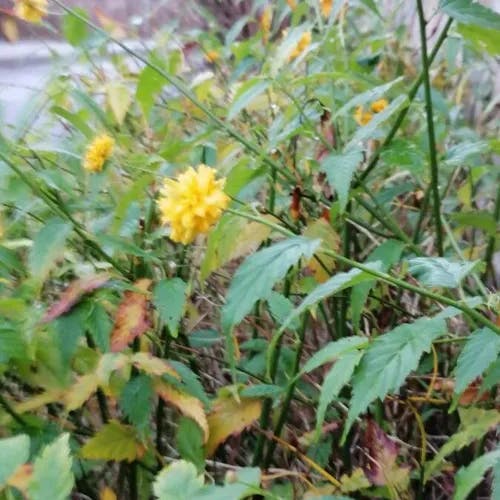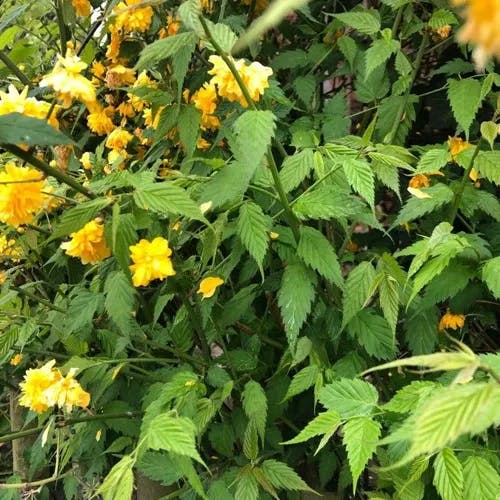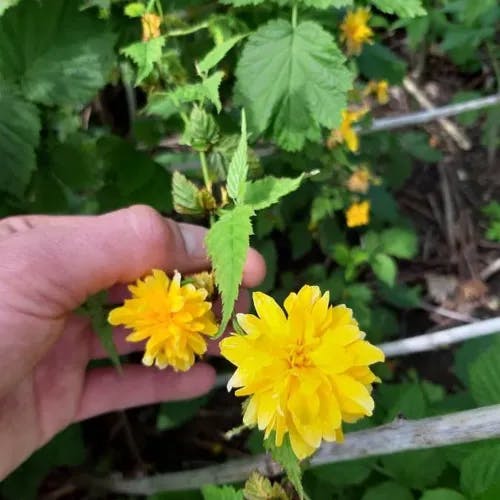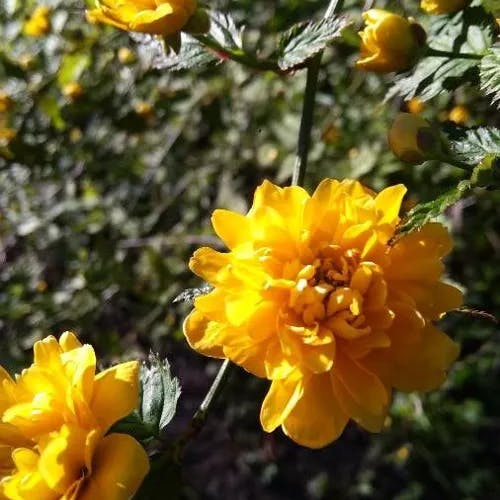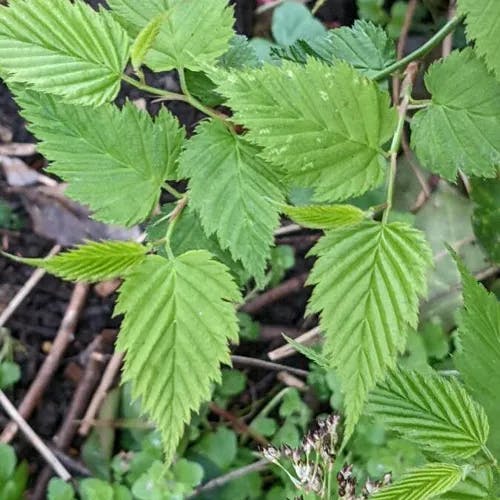The vibrant yellow rose-like blooms of Kerria japonica bring cheer in early spring. This hardy Asian shrub thrives in sun or shade, repaying minimal care with bright evergreen stems and resilience. Long-lasting plentiful blossoms symbolize friendship, while the plant overwinters in mute testimony to longevity. Varieties like ‘Pleniflora’ flaunt fully double flowers, but even simple single blooms impress on arching branches. Tough and adaptable, Kerria suits novice and expert gardeners alike. Its vibrancy withstands clay or sandy soils, and the shrub propagates readily from cuttings. Grown worldwide, yet quintessentially Asian in origin and meaning, Kerria Japonica embodies culture crossing continents.
Japanese kerria
- Scientific name
- Kerria japonica
Basic Information
- Rosaceae Family Kerria Genus Japanese kerria Species
- Rosaceae > Kerria > Kerria japonica
- 83%
- The Completeness of This Encyclopedia
Please help us complete the encyclopedia, Terrarium is a encyclopedia service to be completed with everyone in the world. Currently, this page is 83% complete. For more information on how to contribute, please click here.
- Shrub
- Height
- 100cm ~ 300cm
- Flower Color
- Leaf Color
- Anthesis
- spring
- Sunlight Exposure
Full Sun Long hours of sunlight from morning to afternoon Partial Shade A location in the shade of a tree or where either the morning or afternoon is shaded Full Shade A place where there is no direct sunlight
- Full Sun
- Hardiness Zones
This is an indicator to know to which zone each plant can winter. Knowing the zone of each plant gives you an idea of the cold temperature resistance when grown in the ground without a roof. 2: -42.7 to -40.0 3: -39.9 to -34.4 4: -34.3 to -28.9 5: -28.8 to -23.3 6: -23.2 to -17.8 7: -17.7 to -12.2 8: -12.1 to -6.7 9: -6.6 to -1.1 10: -1.0 to 4.4 11: 4.5 to 10.0
- 5-9
- Cold resistance
- Good
- Heat resistance
- Fair
- Habitat of origin
- China, Japan
- Growth Rate
- Normal
What is Japanese kerria (Kerria japonica)?
What is Japanese kerria (Kerria japonica)
Flower meaning
The prickly flora Kerria japonica is often called Japanese rose in England. It is local to East Asia in China, Nippon, and Chosun. In the coded communication of posies used in the States, it signifies
Calendar of Japanese kerria (Kerria japonica)
Calendar
The yellow-flowering shrub known as Japanese Rose frequently blossoms in the United States from the beginning to the middle of the spring season. Its peak flowering time is usually in the months of April and May. This ornamental plant bears bright yellow blooms that persist for multiple weeks, making it a favored choice for springtime gardens. To lengthen the duration of flowering, it is beneficial to trim the shrub directly after the blooms fade. This stimulates the emergence of new shoots that can flower in the following growing season. However, avoid aggressively pruning as that can decrease the quantity of flowers. Additionally, furnishing this plant with soil that drains well and sunlight exposure ranging from partial to full can assist with promoting extended and healthy flowering. Recognize that the precise blooming period may differ based on the particular growing environment and climate of the area. After flowering has finished, pruning will encourage new growth that can bloom again next season. Take care not to prune too heavily, as that will reduce the number of flowers. Good drainage and proper sunlight are also important for healthy, prolonged blooms. Flowering times can vary depending on local conditions.
How to grow Japanese kerria (Kerria japonica)
Watering
The shrub with yellow flowers blooms during spring time. Its foliage turns yellow during fall. Watering routine is key for healthy growth. Soil should be kept moist, not drenched. Watering once per week during growing season prevents drying out. During winter, water less as plant rests. Check soil to know when to water again. Too much or too little water causes problems. Hot and dry weather means more frequent watering. Cool and wet weather means less watering. Pour water at base of plant. Avoid splashing water on leaves.
Soil and Fertilizer
The succulent plant thrives in nutrient-rich and well-draining dirt. One can enrich the earth with decomposed animal excrement or compost. A slightly sour to impartial pH level of the ground from 6.0 to 7.0 works best. The plant is not a heavy feeder so does not need frequent nourishment. A balanced, gradual-release plant food with a 10-10-10 recipe can be applied in early spring. Apply 1 pound per 100 square feet before new growth starts. It's vital to thoroughly water after feeding to help absorption. Avoid overfeeding as it can lead to weak growth and fewer blooms. Keeping the right soil conditions and proper feeding ensures plant health.
Sunlight and Place
The deciduous shrub Kerria japonica, also referred to as Japanese kerria, thrives in partial sunlight to complete shade. It endures direct sunlight, however too much exposure causes leaf scorch. The shrub favors cooler air and survives cold to USDA hardiness area 4. It struggles in high temperatures above 30 degrees Celsius. Kerria japonica needs at minimum 4 hours of light per day, but tolerates up to 8 hours in chillier climates. In summer, placing it in the shade avoids overheating. In winter, it survives lower light but requires protection from harsh, drying gusts. The optimal range is 15 to 25 degrees Celsius. Although it favors shade, Kerria japonica adapts well to varying light.
Advanced Information of Japanese kerria (Kerria japonica)
Pruning
The Japanese flowering shrub known as Kerria japonica requires frequent cutting back to keep its form and help it flourish. To keep the plant robust and encourage more blooms, pruning is essential for taking out dead or sick branches, thinning crowded growth, and invigorating the plant. The optimal time for trimming Kerria japonica is soon after the blooming period ends in late spring or early summer. Make use of clean, sharp shears to lop off the tallest, oldest stems down to the ground. Also take off any weak, damaged, or infected shoots. After cutting back, feed a balanced, slow-release plant food at the plant's base to stimulate new growth. Then thoroughly water after fertilizing. Remember that over-pruning can stress the plant and lessen flowering, so only remove about one-third of the stems annually. Regularly check the plant for signs of disease or insect infestation, and quickly address any issues to keep your Kerria japonica healthy and vibrant.
Planting and Harvest
The Japanese kerria is a deciduous bush that can be cultivated in containers or in the field. For potted specimens, opt for a pot with decent drainage and utilize a soil mix that drains well. Embed the kerria japonica at the same depth as it was in the nursery pot. Irrigate thoroughly after planting and keep the soil consistently moist, but not waterlogged. For in-ground planting, select a site with partial to full shade and soil that drains well. Excavate an opening twice as wide and deep as the root ball, situate the plant in the hole, and returnfill with soil. When repotting, choose a larger container and fresh soil. Carefully extract the plant from the current pot, situate it in the new pot, and fill with soil. Prune after blooming to keep the shape and size. Avoid overwatering and overfeeding as these can result in root rot and other diseases. Retain moisture but allow drainage. Fertilize lightly. Situate in dappled sunlight. Space plants adequately. Deadhead spent blooms. Add organic mulch to conserve moisture. Stake tall varieties. Propagate by stem cuttings. Hardy in zones 5-9. Prefers slightly acid soil.
Propagation
The Silky Japanese bush, otherwise known as Japanese Cherry Blossom or Japonica, is able to spread through splitting apart, stem cuttings, and underground horizontal stems. To split the plant, during early autumn or late spring, carefully dig up the plant, separate the clump into smaller pieces, then immediately replant. In late summer, healthy, flowering shoots can be cut into 4 to 6 inch parts. Remove lower leaves and put into a pot with well-drained dirt. Layering works by bending a low, bendable branch to the ground, burying part of it under the soil, and fastening it down with a rock or peg. Once the underground part has formed roots, it can be cut from the parent and transplanted. For all methods, making sure the plant stays damp and partially or fully shaded is key. Seeds are not commonly used for spreading because they do not reliably grow into the same plant as the parent.
Pests and Diseases
The flowering plant Japanese marigold, scientifically named Kerria japonica, can be impacted by insects and fungal infections. Small soft insects called plant lice tend to feed on the liquid in the leaves, making the foliage curl up and turn yellow. It's a good idea to regularly check over the shrub for these bugs and use natural pesticides made of soap or neem to stop an infestation. This plant can also get leaf infections from various mold fungi. They make spots on the leaves that can lead to the leaves falling off too early. To prevent mold from growing, make sure air can circulate well around the shrub and avoid getting water on the leaves which makes a moist home for fungi. Another issue for Japanese marigold is stem and root decay, usually from overwatering or soil that doesn't drain well. Decay makes the whole plant wilt and eventually pass away. To avoid decay, ensure the shrub is planted in loose draining earth and be careful not to overwater. Finally, this plant can suffer from blight which is rapid loss and death of plant tissue. Keeping the area tidy by removing and throwing out infected plant parts can prevent blight. Applying appropriate antifungal agents also helps. To summarize, with attentive care and prevention, Japanese marigold can be protected from insects and diseases it is prone to.
Habitat of Japanese kerria (Kerria japonica)
Habitat
Toxicity of Japanese kerria (Kerria japonica)
Health Benefits
- edible
- Inedible
- Toxic
- No toxicity
NO DATA
Toxic for dogs and cats
NO DATA
Q&A of Japanese kerria (Kerria japonica)
- How and When to Prune Japanese Kerria?
The Japanese Kerria is scientifically called Kerria japonica. Ideally, one should trim it right after its done flowering, which is typically late spring or early summer. This timing lets the plant prepare buds for next year's blooms. Pruning means taking off any dead or harmed branches, and also making the bush less dense to let light and air reach the inside parts. Cut back around a third of the oldest stems to the ground every year to encourage new growth. Remember, Kerria japonica is a forgiving plant and will handle heavy pruning if need be. However, it's best to keep a natural shape for a healthier and more visually pleasing bush.
- Is there a recommended way to choose Kerria japonica?
The Japanese barberry, scientific name Berberis thunbergii, is a deciduous flora often spread through parting rather than seeds. At the time of procuring seedlings, examine for in good health, energetic plants lacking any evidence of unwellness or pest impairment. There are two principle varieties of Japanese barberry: the single-flowered 'Pleniflora' and the double-flowered 'Golden Guinea'. 'Pleniflora' is the more widespread variant and is characterized by its bright goldenrod, tassle like floras. 'Golden Guinea' has larger, sole floras and is a more robust developer. When choosing a variant, ponder the coveted aesthetic and growth habit for your garden plot. If you are procuring seeds, which is less common, guarantee they are fresh and sourced from a reputable supplier. Remember, the Japanese barberry prefers a partially shaded location with well-drained soil, so consider these factors when choosing your plant.
0
0
- What Problems Might Arise with Japanese Kerria?
The plant Kerria japonica may have some problems. One common problem is that the leaves and stems can get spots and sore places, which can make them change color and wilt. In addition, bugs like tiny flies and scale insects can bother this plant. These bugs can hurt it by sucking the juice out of the plant. This can make the plant not grow as well and make the leaves turn yellow. Also, Japanese Kerria can take over if it is not cared for properly. It grows fast and spreads by making new plants from its roots. This can make it push out other plants in the yard. Last, it may have trouble in very cold or very dry weather. Even though it is generally tough, bad cold or drought can stress it out and hurt it. Regular watering and protection during bad weather can help stop these problems.
0
0
- What Is the Growth Rate of Japanese Kerria?
The deciduous bush Kerria japonica, also called Japanese Kerria, is usually observed to grow at a moderate to quick rate. Within a couple growing seasons, it is able to attain 6 to 9 feet in elevation and width with optimal environmental factors. This shrub does well in moist, nutrient-rich topsoil and partial or complete shade. Its maturing pace can be strongly determined by such conditions. It's also crucial to remember that pruning immediately following blooming can assist regulate the bush's expansion. Moreover, the resilience and flexible nature of Japanese Kerria add to its fast maturation. It can thrive in diverse soil compositions and settings, making it an adaptable choice for numerous gardeners.
0
0
- Is Japanese Kerria Resistant to Deer?
The plant Kerria japonica is resistant to deer damage. Deer do not favor this plant's foliage as food. The plant suits gardens frequented by deer. However, when pickings are slim deer might still nibble Kerria. Also, Kerria faces other threats like fungal leaf spot or canker disease. Care like watering prevents these issues. But deer left Kerria alone.
0
0

